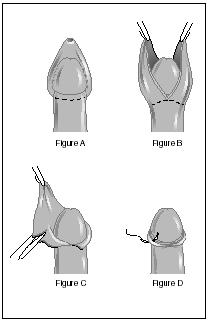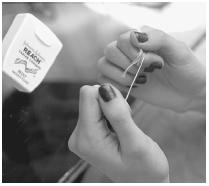Just like skin, hair covers and protects the body. Hair is made up of tubes of keratin. Keratin is a tough protein produced by the body. Hair grows from roots in the skin, which are called follicles. Unlike the skin, which is a living organism, by the time a hair grows out of the follicle, it is already "dead." At the bottom of the follicle is the sebaceous gland. There, sebum, an oily substance that lubricates the hair shaft, is made.
Scalp Hair: The Hair on Your Head
Hair comes in a variety of types. Whether hair is curly, wavy, or straight depends upon the shape of the hair follicle. A flat follicle yields wavy hair while a round follicle produces straight hair. Very curly hair comes from oval-shaped follicles. As there are different types of hair, there are also different colors and different textures—thick or thin. Whatever kind of hair a person has, it is important that it be kept clean. This will help it look and smell good and prevent the development of scalp problems.
The hair on the head (and the scalp, for that matter) can be dry, oily, or normal, which is a combination of the two. These categories refer to the amount of sebum that accumulates on the scalp. Sebum gets distributed through the hair by combing, brushing, or touching the hair. When sebum accumulates at a normal level, it acts as a built-in conditioning system for the hair, keeping it soft and shiny.
The amount of sebum a person produces varies throughout his or her life. With puberty, there is a marked increase in sebum production between the ages of eleven and fifteen. From eighteen to twenty-four years of age, there isn't as much sebum being produced, and by age fifty, there is a dramatic drop-off in sebum production, which causes hair to look duller and rougher.
Most people have normal hair, which means it's neither too dry nor too oily. Those with dry hair often have chemically treated (colored, permed, or straightened) or coarse hair. While people of all ages can have oily hair, teens often have oily hair because of the increase in sebum that puberty causes.
ATHLETE'S FOOT
One doesn't have to be an athlete to get athlete's foot. Athlete's foot, or foot ringworm, describes a type of fungus infection that occurs on the feet. It usually occurs in males over twelve years of age; it is not common with young children and women.
Athlete's foot thrives in moist, damp conditions, especially when a person is wearing tight shoes and socks in hot weather. When the feet cannot breathe due to a lack of ventilation, athlete's foot can occur. It can take different forms on different people. Sometimes, the skin between the toes will peel and crack, and at other times, blisters develop on the soles and sides of the feet. In most cases, there is an itch that accompanies these other symptoms.
When athlete's foot is diagnosed by a dermatologist (a doctor that specializes in skin), a patient will usually receive an antifungal cream to treat the problem, which generally heals in a short time. The American Academy of Dermatology recommends the following steps to prevent athlete's foot.
- Wash feet every day.
- Be sure to dry feet thoroughly, especially in between the toes.
- Only wear socks made of cotton, and change them if they get moist or damp.
- Go barefoot when at home.
- Try to wear sandals, and avoid tight shoes in warm weather.
- If possible, use an antifungal powder in tight shoes.
Grooming hair often using a brush, comb, or pick is important as it helps distribute sebum through the hair. This will help hair look shinier and smoother. It will also prevent knots and tangles, both of which can lead to hair breaking or splitting.
Shampoo and Conditioner: Keeping It Clean and Smooth
There are shampoos available for all hair types. How often a person shampoos varies and depends upon that individual's hair type. A person with dry or extremely curly hair may shampoo less often than an individual with oily or straight hair. The key to good hair hygiene is shampooing often enough to keep hair looking and smelling clean.
Conditioners can help keep hair shiny and smooth. They also offer protection against the drying effects of styling hair with heat or using styling products that contain alcohol, which can be drying too. Just as with shampooing, how often and how much conditioner a person uses will depend on hair type and styling habits. An individual with coarse, curly hair that must be straightened with a blow-dryer each day should protect hair with a good amount of conditioner; someone with limp, oily hair may opt not to use conditioner at all.
Scalp Conditions
There are some skin and scalp problems that can develop that have no relation to how clean someone's hair is. Good hair hygiene, however, can help prevent infection.
HEAD LICE. Head lice are tiny insects, or skin parasites, that burrow into the scalp. They cause itching of the scalp, which can lead to a bacterial infection because of repeated scratching. In children, however, head lice are often barely noticeable. Head lice are spread through personal contact and through sharing things such as combs, brushes, and hats. Often, the lice can make their way into a person's eyebrows, eyelashes, or facial hair. Head lice can easily turn into an epidemic (the rapid spreading of a disease to many people at the same time) at a school because children often share personal items. The problem is treatable by using a cream, lotion, or shampoo, all of which are available at pharmacies.
THE AVERAGE PERSON LOSES 80 SCALP HAIRS EACH DAY.
DANDRUFF. Dandruff, also known as seborrheic dermatitis, is a swelling of the upper layers of skin on the scalp. The first signs are a drying or a greasy scaling of the scalp. Often this is accompanied by itching. Dandruff is a condition that may be inherited, and cold weather can often make dandruff worse. Unlike head lice, dandruff is not contagious. Similarly, though, it is treatable with shampoos or solutions that are available at pharmacies.
Body Hair
The onset of puberty usually means an increase in the growth of body hair for both boys and girls. Hair will appear in the pubic area, and hair on the arms, underarms, legs, and face (for boys) will often grow thicker. While body hair does protect the skin and body, it is not necessary to a person's well-being. However, removing body hair is not necessary for good hygiene if a person bathes or showers on a regular basis.
Boys and Facial Hair
As facial hair continues to grow, many boys will opt to shave. How often that is done is really a personal choice, one that depends on how fast and thick the hair grows. It also depends on whether or not a beard, goatee, or mustache is desired. However often a man wishes to shave his face, a traditional or disposable razor with shaving cream or gel or an electric razor may be used for shaving facial hair.
Girls and Body Hair
Just as boys choose to shave their faces (or not), girls may opt to remove unwanted hair on their arms, face, legs, bikini (pubic) area, and underarms. There are many methods appropriate for getting rid of this hair. Remember that different methods are better suited to different body parts.
SHAVING. Using either a traditional or disposable razor and shaving cream, girls can shave their legs, underarms, and bikini area. Electric razors are also effective although many electric razors do not provide a very close shave. In fact, both methods of shaving will not remove hair at the root, which means hair will grow back more rapidly than a hair-removal method that does remove hair at the root.
HAIR REMOVAL: A PERSONAL CHOICE
Choosing to remove the hair on one's body is a personal choice that is often influenced by the culture in which a person is raised. Certain cultures and religions frown upon hair removal while others enthusiastically encourage the practice. For girls, this is often a more involved decision as the American media is constantly assaulting female consumers with advertisements for products that will remove "unwanted" hair on the face, legs, underarms, and bikini area. At the height of the feminist movement in the 1970s, many women gave up shaving and waxing their leg and underarm hair. Today, many women also are opting not to remove any body hair, while others choose to do so.
TWEEZING. Plucking hairs with a pair of tweezers is a safe and clean way to remove hair; however, it only removes a single hair at a time, making it a more effective method for removing hair on the eyebrow area or removing a single, stray hair.
DEPILATORIES. Depilatories are lotions, creams, and gels that chemically dissolve body hair near the root. They tend to be time-consuming and can be messy. Also, because they contain chemicals, some people may find them irritating. Depilatories are effective for removing leg and bikini hair as well as underarm hair.
WAXING. Waxing involves warmed wax that is applied to the skin. A strip of cloth is then placed atop the wax. The strip is pulled back, removing the hair at the root. This procedure is typically done in salons and can be time-consuming. Also, waxing can often be painful and irritating to the skin. However, it pulls out the root of the hair, so waxing can last up to two months. Waxing is most effective for removing hair on the arms, bikini area, face, legs, underarms, and even the back.
SUGARING. Sugaring is a hair-removal technique, similar to waxing, in which melted sugar is applied to the skin and rolled off with the hands, removing the hair in that area in the process. Like waxing, sugaring can be used for most areas of the body and the results can last for two months. Sugaring is slightly less painful and irritating than waxing can be. Sugaring is typically offered at salons that use all-natural products.
ELECTROLYSIS. This hair-removal procedure takes place in the office of an electrologist (a professional trained to perform electrolysis). Hair is destroyed permanently at the root using an electric current. A needle is placed into the skin where the hair protrudes so that electricity can destroy the hair follicle. While the effects of electrolysis are lasting, it is a time-consuming, painful, and costly procedure (as it can take a few sessions before the hair follicle is actually destroyed). This is most appropriate for small areas of the body, such as the face.
LASER TREATMENTS. Laser treatments that remove hair are expensive and the results last only two months at first. Despite this, laser treatments are growing very popular for removing hair in the leg and bikini area. Over time, with continued treatments, results can last up to six months. However, it can take hair up to three weeks to fall out so many people shave the area after receiving treatment to prevent shedding. Also, a loss of skin pigment may be experienced in people with darker skin.

 1. Drink plenty of water. This will increase your Fat metabolism rate and
1. Drink plenty of water. This will increase your Fat metabolism rate and ever
ever

 of light-weight Dumbbells, that you can purchase from your nearby sports-shop
of light-weight Dumbbells, that you can purchase from your nearby sports-shop

 he feels complete and makes her life more significant to her. It is very beautiful experience and during this period she beats all the pains and changes happening to her body.
he feels complete and makes her life more significant to her. It is very beautiful experience and during this period she beats all the pains and changes happening to her body.






